Inbox and Environment News - Issue 229
August 30 - September 5, 2015: Issue 229
Update on action to protect Australia's environmental laws: Have Your Say
Friday, August 28, 2015 - BirdLIfe Australia
Last Thursday, the Federal Government’s Environment Protection and Biodiversity Conservation Amendment (Standing) Bill 2015 was introduced into Parliament where it was referred for Senate inquiry and report.
I am writing to advise that the Senate Standing Committees on Environment and Communications is now accepting submissions on this Bill. The closing date for submissions is Friday, 11 September 2015.
BirdLife Australia will join the Places You Love Alliance in making a submission to this inquiry and is encouraging others to do the same. For further information on why maintaining Section 487 of the EPBC Act (1999) is critical to ensuring a robust environmental legal framework, see this EDO Explainer.
Samantha Vine
Head of Conservation - BirdLife Australia
Environment Protection and Biodiversity Conservation Amendment (Standing) Bill 2015
A Bill for an Act to amend the Environment Protection and Biodiversity Conservation Act 1999, and for related purposes
The Parliament of Australia enacts:
1 Short title
This Act may be cited as the Environment Protection and Biodiversity Conservation Amendment (Standing) Act 2015.
2 Commencement - (1) Each provision of this Act specified in column 1 of the table commences, or is taken to have commenced, in accordance with column 2 of the table. Any other statement in column 2 has effect according to its terms.
Commencement
The whole of this Act - The day after this Act receives the Royal Assent.
Amendments
Environment Protection and Biodiversity Conservation Act 1999
1 Section 487
Repeal the section.
2 Application of amendment
The repeal of section 487 of the Environment Protection and Biodiversity Conservation Act 1999 by this Schedule applies in relation to any application made under the Administrative Decisions (Judicial Review) Act 1977 after this item commences (whether the decision, failure to make a decision or conduct to which the application relates occurs before or after this item commences).
House of Representatives
20 Aug 2015 Introduced and read a first time
20 Aug 2015 Second reading moved
Referred to Committee (20/08/2015): Senate Environment and Communications Legislation Committee; Report due 12/10/2015
Documents Relating to available here:www.aph.gov.au/Parliamentary_Business/Bills_Legislation/5522
Citizen scientists needed to help save sick wombats
25 August 2015 - As wombats fight for survival against a deadly skin disease that kills in months, University of Western Sydney scientists are asking Australians to help take a census of wombats using an innovative new app.
WomSAT, launched by the University of Western Sydney, allows everyday citizens to report wombat sightings and record the animal's health.
Chief investigator on the project, Associate Professor Julie Old, says wombats across the country are under threat from a parasitic mite which causes sarcoptic mange.
The mites initially burrow into the skin causing the wombats to become itchy. In the longer term, they are likely to become blind, deaf and die due to the secondary effects of the infestation. Early physical signs of the infestation include missing patches of fur and scratching.
"Wombats across eastern and southern Australia are dying in the thousands because of this deadly disease," says Associate Professor Old, a biologist from the UWS School of Science and Health.
"To fully understand the challenges facing wombats and ensure their future survival, we need to take a comprehensive census of wombat numbers, their distribution and their health."
"And the best way to adequately monitor the vast and often remote habitat of wombats is through the eyes and phones of millions of Australians."
UWS is calling on everyone around the country to join the fight by using WomSAT, a new website and app allowing anyone to easily record the exact location of a wombat using a phone's inbuilt GPS.
The app and website have images and text to guide people on how to identify the wombat and how to visually diagnose mange.
"Wombats severely affected by mange suffer painful skin infections and are often seen during the day," says Associate Professor Old.
"It's likely these wombats are venturing out during the day to spend more time foraging to compensate for the energy used scratching."
"By taking the time to log onto WomSAT every time a wombat is spotted, Australians can participate in science and help monitor the population and alert experts about changes and threats to the population."
WomSAT is supported by Emirates Airlines and Emirates One&Only Wolgan Valley.
The WomSAT website is hosted by the NSW Department of Primary Industries.
Get involved here: womsat.org.au/womsat
Improving mining regulation in NSW: Stage 2
Media Release: Department of Planning and Environment
The Department of Planning and Environment today released a number of guidelines for public feedback, which provide clear and consistent requirements for State significant mining development in NSW.
The guidelines are part of the broader Integrated Mining Policy, and include:
Independent Audit Guidelines – to ensure that independent audits of State significant developments in NSW adopt a consistent approach and meet minimum standards.
Web-based Reporting Guidelines – to encourage operators to apply a consistent approach to the publication of information regarding mining operations and make more information available to the public.
Annual Review Guidelines – to assist operators of State significant mining developments to prepare annual reviews.
Water Regulation and Policy – to provide an overview of the current policies and regulations in relation to possible water impacts from mining and petroleum developments in NSW.
Planning Agreement Guidelines – to assist councils and mining companies in negotiating planning agreements for State significant mining developments.
A spokesperson said this was the second stage of the Integrated Mining Policy’s exhibition and gave the community and industry a chance to provide feedback on the draft documents.
“These Guidelines and policy documents will help major mining projects operate safely and comply with their approval conditions,” the spokesperson said.
This is part of a suite of mining policy reforms. The first stage of the Integrated Mining Policy, focussing on applying stringent, clear and consistent requirements to mining applications was released in May for public comment. The Department is currently considering feedback.
In addition, the NSW Government also released a draft amendment to the state policy governing mining in NSW – the State Environmental Planning Policy (Mining, Petroleum Production and Extractive Industries) known as the Mining SEPP.
The draft amendment would remove a provision making the significance of the resource the principal consideration under the Mining SEPP when determining mining projects. It was on exhibition for public feedback this month and the Department is currently considering the feedback.
The exhibition of the Integrated Mining Policy Stage 2 is openuntil 7 September.
To give feedback visit www.planning.nsw.gov.au/onexhibition
______________________________
Direct link: planning.nsw.gov.au/index.pl.actionjob_id=7123
Coal Innovation NSW Fund Expressions of Interest Round 2015
On 25 August, the NSW Government announced the release of the Coal Innovation NSW Fund Expressions of Interest Round 2015 to support research, development and demonstration of low emissions coal technologies (see advertisement below).
Projects must be designed for coal or for coal fired power stations within NSW and be directly related to aspects relevant to the reduction of greenhouse gas emissions, increased combustion efficiency and results in increased technical capability for NSW.
The closing date for applications is 12 October 2015.
Find out more here
About Coal Innovation NSW
Coal Innovation NSW is an advisory council that brings together representatives of coal and energy industries, research institutes and the NSW Government to consider how best to support low emissions coal technologies research and development in NSW.
Coal Innovation NSW:
provides advice and makes recommendations to the Government about funding projects that encourage the development of low emissions coal technologies
advises on policies to encourage the development and implementation of low emissions coal technologies
makes recommendations about opportunities for private and public sector entities in interstate, national and international research projects involving low emissions coal technologies
provides advice on other matters concerning low emissions coal technologies, and
undertakes these activities in accordance to the Coal Innovation NSW Code of Conduct.
The $100 million Coal Innovation NSW Fund is a vital tool in reducing NSW's carbon dioxide emissions, now and into the future. The Fund's main purpose is to support research, development and demonstration of low emissions coal technologies for future commercial application. It also aims to increase public awareness in the importance of low emissions coal technologies in reducing greenhouse gas emissions.
Coal Innovation NSW Fund
The Coal Innovation NSW Fund invests directly into the NSW CO2 Storage Assessment Project, research, development and demonstration projects and other initiatives in low emissions coal technologies.
The NSW CO2 Storage Assessment Program aims to identify options for permanently storing CO2 underground in NSW. This $54 million program has received support for joint funding from the Commonwealth Government and Australian Coal Association Low Emission Technology Ltd. NSW has allocated $18.1 million to the scheme.
NSW initiated the Delta Carbon Capture and Storage Demonstration Project with Delta Electricity. This project pioneered investigation into the possibilities for live carbon capture and storage in NSW. Stage 1 of this project - a 'development and approvals' stage - was jointly funded by the Commonwealth, Australian Coal Association Low Emission Technology Ltd and the Coal Innovation NSW Fund.
Reports
Coal Innovation Fund NSW: Report to NSW Parliament 2013-2014PDF (4.99 MB PDF) - Published July 2015
'Targeted punishments' against countries could tackle climate change
August 25, 2015 - Targeted punishments could provide a path to international climate change cooperation, new research in game theory has found.
Conducted at the University of Warwick, the research suggests that in situations such as climate change, where everyone would be better off if everyone cooperated but it may not be individually advantageous to do so, the use of a strategy called 'targeted punishment' could help shift society towards global cooperation.
Despite the name, the 'targeted punishment' mechanism can apply to positive or negative incentives. The research argues that the key factor is that these incentives are not necessarily applied to everyone who may seem to deserve them. Rather, rules should be devised according to which only a small number of players are considered responsible at any one time.
The study's author Dr Samuel Johnson, from the University of Warwick's Mathematics Institute, explains: "It is well known that some form of punishment, or positive incentives, can help maintain cooperation in situations where almost everyone is already cooperating, such as in a country with very little crime. But when there are only a few people cooperating and many more not doing so punishment can be too dilute to have any effect. In this regard, the international community is a bit like a failed state."
The paper, published in Royal Society Open Science, shows that in situations of entrenched defection (non-cooperation), there exist strategies of 'targeted punishment' available to would-be punishers which can allow them to move a community towards global cooperation.
"The idea," said Dr Johnson, "is not to punish everyone who is defecting, but rather to devise a rule whereby only a small number of defectors are considered at fault at any one time. For example, if you want to get a group of people to cooperate on something, you might arrange them on an imaginary line and declare that a person is liable to be punished if and only if the person to their left is cooperating while they are not. This way, those people considered at fault will find themselves under a lot more pressure than if responsibility were distributed, and cooperation can build up gradually as each person decides to fall in line when the spotlight reaches them."
For the case of climate change, the paper suggests that countries should be divided into groups, and these groups placed in some order -- ideally, according roughly to their natural tendencies to cooperate. Governments would make commitments (to reduce emissions or leave fossil fuels in the ground, for instance) conditional on the performance of the group before them. This way, any combination of sanctions and positive incentives that other countries might be willing to impose would have a much greater effect.
"In the mathematical model," said Dr Johnson, "the mechanism works best if the players are somewhat irrational. It seems a reasonable assumption that this might apply to the international community."
Samuel Johnson. Escaping the Tragedy of the Commons through Targeted Punishment. Royal Society Open Science, 2015 [link]
Santos Leewood Project
20th August 2015 ; Media release; NSW Government Department of Industry, Resources & Energy
The NSW Division of Resources and Energy has approved, with conditions, an application by Santos for a water management project known as the Leewood Produced Water Treatment and Beneficial Re-use Project.
This project is on Santos' Leewood property 24 kilometres south of Narrabri.
In addition to the standard conditions to ensure there is no significant impact on the environment for this project the Division has included the following conditions:
A Water Treatment Plan submitted and approved by the Division in consultation with the Environment Protection Authority (EPA) and the Department of Primary Industries prior to the operation of the water treatment plant.
An Irrigation Management Plan submitted to and approved prior to undertaking the proposed irrigation. This plan is to be developed in accordance with the EPA's Use of Effluent by Irrigation Guidelines(2003).
An additional groundwater monitoring bore installed directly north of the irrigation area to monitor any groundwater impacts in this area.
A Brine Disposal Management Plan submitted to and approved by the Division within six months of the date of this approval.
The Leewood Project involves building and operating a facility to treat produced water extracted from gas exploration activities. The REF for the water treatment plant includes:
a reverse osmosis plant and brine concentrator;
associated pipework to transfer water and bring around the facility;
treated water storage; and
an irrigation system.
Treated water will be reused for irrigation purposes on the Leewood property, dust suppression, drilling, construction activities and firefighting.
As part of the assessment the Environment Protection Authority (EPA), Department of Planning and Environment (DPE), Department of Primary Industries (including DPI Water) and NSW Roads and Maritime Services (RMS) were consulted.
The documents associated with the approval will be published on the Division of Resources and Energy's DIGS database.
___________________
Direct link: search.geoscience.nsw.gov.au/report/R00070789
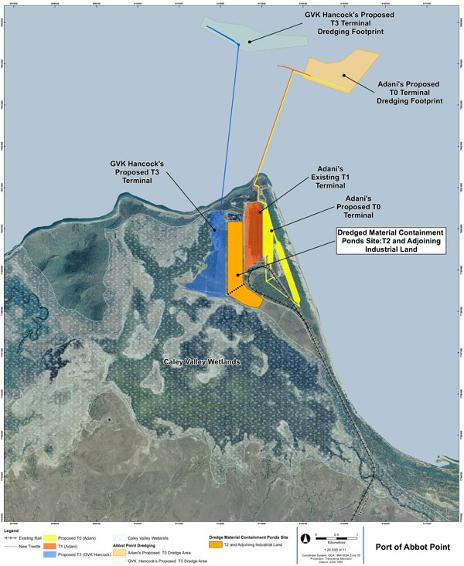
Expanding the Port of Abbot Point
August 20, 2015: QLD State Government
Consultation is Open - Runs from 20 Aug 2015 to 18 Sep 2015
The Queensland Government is committed to expanding the Port of Abbot Point in a responsible and sustainable manner.
The government is proposing to dredge an area needed for a new export wharf and place the dredged material on unallocated industrial land, next to the existing operational coal terminal.
View a map of this proposal. (Above)
This is the most sustainable option for expanding the port. Importantly:
no dredging will occur in the Great Barrier Reef Marine Park
no dredged material will be dumped in the Great Barrier Reef Marine Park or World Heritage Area
dredged material will not be dumped in the Caley Valley Wetlands.
Queensland taxpayers will not pay for costs associated with approvals or dredging for this project. Galilee Basin project developers Adani and GVK Hancock will meet these costs.
Approval for the Abbot Point Growth Gateway Project which includes dredging and the construction of dredged material containment ponds is now underway. The Queensland Government is conducting a full Environmental Impact Statement (EIS) for this project.
The Queensland Government has launched public consultation on the draft Environmental Impact Statements for the proposed Abbot Point Growth Gateway Project. View the Environmental Impact Statement and have your say.
Abbot Point Growth Gateway Project
Proposed Abbot Point Growth Gateway Project (EPBC2015/7467)
Overview
The Director-General of the Queensland Government Department of State Development is proposing to dredge berth pockets and aprons, construct dredged material containment ponds, place dredged material onshore and manage the material including its removal and beneficial reuse within the Port of Abbot Point, North Queensland. The proposed works are adjacent to the existing Abbot Point coal terminal infrastructure, located 25km North of Bowen.
The proposed action is a controlled action under the Environment Protection and Biodiversity Conservation Act 1999 (EPBC Act) and is being assessed by Environmental Impact Statement (EIS). The controlling provisions for assessment are:
World Heritage properties (sections 12, 15A)
National Heritage places (sections 15B, 15C)
Listed threatened species and communities (Sections 18, 18A)
Listed migratory species (sections 20, 20A)
Commonwealth marine areas (sections 23, 24A)
Great Barrier Reef Marine Park (sections 24B, 24C).
In accordance with Section 103, the draft EIS will be available for viewing and public comment for a period of 21 business days.
How to comment:
1. Read the Environmental Impact Statement online
The documents can also be viewed electronically at:www.dsd.qld.gov.au/abbotpoint
or visit the following display locations to view printed copies of the Environmental Impact Statement from Friday 21 August:
The State Library of Queensland, South Bank, Brisbane
Mackay City Library, Gordon Street, Mackay
Townsville Library, Flinders Street, Townsville
Bowen Library, Herbert Street, Bowen.
If you have special communication needs, please phone 07 3452 6921.
2. Send your submission to one of the following:
Post: Abbot Point Growth Gateway Project, Department of State Development, PO Box 15009, City East Qld 4002
OR Email: abbotpoint@dsd.qld.gov.au
OR Fill out the online survey (link below) : HERE
Known as the Abbot Point Growth Gateway Project, dredging and construction works for T0 are a key component of the Abbot Point port expansion.
If approved, this project will allow the construction of a second trestle at the Port of Abbot Point, increase the port's capacity from 50 to 120 million tonnes per annum. This will ensure it can meet export requirements from the Galilee Basin.
Project overview
The Abbot Point Growth Gateway Project involves dredging 1.1 million cubic metres in situ of seabed. Adani's proposed dredging area is approximately 61 hectares of seabed within port limits, outside the Great Barrier Reef Marine Park.
In comparative terms, the proposed dredging footprint is tiny compared to the Great Barrier Reef Marine Park's nearly 35,000,000 hectares.
The proposed dredging site is 19 and 30 kilometres away from the nearest coral communities (945 KB). Scientific modelling has found that sediment will be highly localised to the dredging site and will not impact these coral communities.
This dredged material will be placed on vacant industrial land ( 3.6 MB) at the port, next to the existing coal terminal. This industrial land has been previously disturbed and used for port development purposes.
On-the-ground studies and investigations have been undertaken and the Environmental Impact Statement (EIS) is now available for review and comment.
Project status
On 17 April 2015, the Queensland Government lodged an application with the Commonwealth Department of the Environment to begin the approval process for the Abbot Point Growth Gateway Project.
The Commonwealth Government has considered this application under the Environment Protection and Biodiversity Conservation Act 1999 and determined that a full Environmental Impact Statement is required for the project.
As part of this process, the draft Environmental Statement is available online, and the state government is now inviting public comment on this information.
Adani, not Queensland taxpayers, is meeting the costs of the approval and investigation processes.
For the latest information on the Port of Abbot Point, visit us on twitter @abbotpoint.
Last updated on 20 August 2015
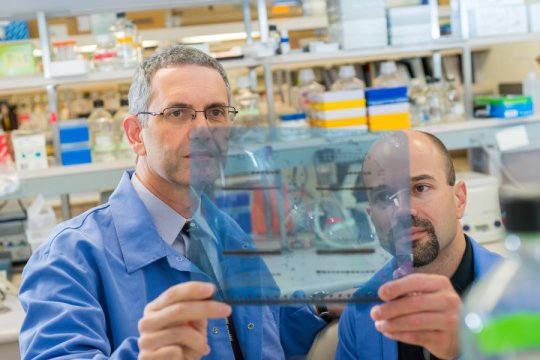
Discovery of new code makes reprogramming of cancer cells possible
August 24, 2015 - Cancer researchers dream of the day they can force tumor cells to morph back to the normal cells they once were. Now, researchers on Mayo Clinic's Florida campus have discovered a way to potentially reprogram cancer cells back to normalcy.
The finding, published in Nature Cell Biology, represents "an unexpected new biology that provides the code, the software for turning off cancer," says the study's senior investigator, Panos Anastasiadis, Ph.D., chair of the Department of Cancer Biology on Mayo Clinic's Florida campus.
That code was unraveled by the discovery that adhesion proteins -- the glue that keeps cells together -- interact with the microprocessor, a key player in the production of molecules called microRNAs (miRNAs). The miRNAs orchestrate whole cellular programs by simultaneously regulating expression of a group of genes. The investigators found that when normal cells come in contact with each other, a specific subset of miRNAs suppresses genes that promote cell growth. However, when adhesion is disrupted in cancer cells, these miRNAs are misregulated and cells grow out of control. The investigators showed, in laboratory experiments, that restoring the normal miRNA levels in cancer cells can reverse that aberrant cell growth.
"The study brings together two so-far unrelated research fields -- cell-to-cell adhesion and miRNA biology -- to resolve a long-standing problem about the role of adhesion proteins in cell behavior that was baffling scientists," says the study's lead author Antonis Kourtidis, Ph.D., a research associate in Dr. Anastasiadis' lab. "Most significantly, it uncovers a new strategy for cancer therapy," he adds.
That problem arose from conflicting reports about E-cadherin and p120 catenin -- adhesion proteins that are essential for normal epithelial tissues to form, and which have long been considered to be tumor suppressors. "However, we and other researchers had found that this hypothesis didn't seem to be true, since both E-cadherin and p120 are still present in tumor cells and required for their progression," Dr. Anastasiadis says. "That led us to be believe that these molecules have two faces -- a good one, maintaining the normal behavior of the cells, and a bad one that drives tumorigenesis."
Their theory turned out to be true, but what was regulating this behavior was still unknown. To answer this, the researchers studied a new protein called PLEKHA7, which associates with E-cadherin and p120 only at the top, or the "apical" part of normal polarized epithelial cells. The investigators discovered that PLEKHA7 maintains the normal state of the cells, via a set of miRNAs, by tethering the microprocessor to E-cadherin and p120. In this state, E-cadherin and p120 exert their good tumor suppressor sides.
However, "when this apical adhesion complex was disrupted after loss of PLEKHA7, this set of miRNAs was misregulated, and the E-cadherin and p120 switched sides to become oncogenic," Dr. Anastasiadis says.
"We believe that loss of the apical PLEKHA7-microprocessor complex is an early and somewhat universal event in cancer," he adds. "In the vast majority of human tumor samples we examined, this apical structure is absent, although E-cadherin and p120 are still present. This produces the equivalent of a speeding car that has a lot of gas (the bad p120) and no brakes (the PLEKHA7-microprocessor complex).
"By administering the affected miRNAs in cancer cells to restore their normal levels, we should be able to re-establish the brakes and restore normal cell function," Dr. Anastasiadis says. "Initial experiments in some aggressive types of cancer are indeed very promising."
Siu Ngok, Ryan Feathers; Lomeli Carpio; Tiffany Baker; Jennifer Carr; Irene Yan; Sahra Borges, Edith Perez, Peter Storz, John Copland, Tushar Patel, E. Aubrey Thompson, Pamela Pulimeno, Sandra Citi. Distinct E-cadherin-based complexes regulate cell behaviour through miRNA processing or Src and p120-catenin activity. Nature Cell Biology, 2015 DOI: 10.1038/ncb3227
Top: Lead authors Panos Anastasiadis, Ph.D., and Antonis Kourtidis, Ph.D. Credit: Image courtesy of Mayo Clinic
Sustainable House Day 2015
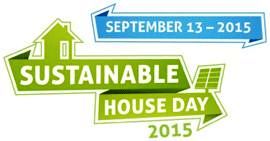 Sustainable House Day, on Sunday 13 September 2015, is an international event where people who own houses that are doing good things with materials, energy, water and food, are opened up for any interested visitor to have a good long look at – to poke around, ask questions, and see for themselves.
Sustainable House Day, on Sunday 13 September 2015, is an international event where people who own houses that are doing good things with materials, energy, water and food, are opened up for any interested visitor to have a good long look at – to poke around, ask questions, and see for themselves.
It started in Australia, and has been going for about ten years, and over that period, tens of thousands of people have been inspired to ‘go and do likewise’. This is probably the most powerful tool we know of for educating and motivating people who know they want to do something, but are not quite sure what. And it’s something we all do – we see what somebody else has done, and say to ourselves “Hey – I can do that!”
THE TREEHOUSE - North Narrabeen, NSW
The owners of this award winning house wanted a sustainable home that would cater for their growing family and a separate granny flat for overseas visitors, all with a tree house feel. Lots of established trees, and steep land sloping away from the road contributed to the challenge of providing universal access to the main living […]
BEN BOYD ROAD HOUSE - Neutral Bay, NSW
Many sites have limited solar access, and are often written off as unsuitable for a low-energy high-comfort house. This should not be. This site in Neutral Bay, like many urban sites, had significant shading to the north, but we took advantage of one ‘window’ of north sun at ground level, and then ‘borrowed’ the rest from […]
WOY WOY BAY HOUSE - Woy Woy Bay, NSW
Originally a fishing shack dating back to the 1950s, there have been extensions in the 1960’s, 1970’s, and then a deck replacement in 2011. A primary goal for the 2011 renovation was to make the house more sustainable. This ongoing project has involved insulating both internal and external walls, while fibro (asbestos) cladding is removed and […]
You can see all the available houses at: sustainablehouseday.com
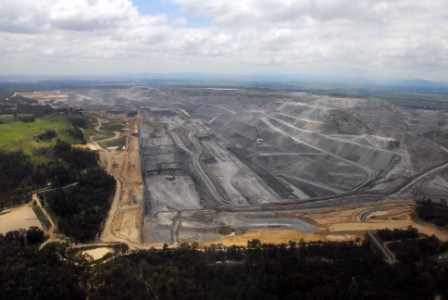
Have Your Say - Integrated Mining Policy
August 25, 2015: Environmental Defenders Office NSW (EDO)
The NSW Government is proposing a new whole-of-government approach to mining applications
Feedback is sought on the Integrated Mining Policy. The Policy proposes to:
require information from mine applicants earlier in the assessment process, including the requirement to show how they arrived at their preferred project designs;
provide one whole-of-government set of Secretary’s Environmental Assessment Requirements for mining applications; and
clarify Government policies so they are easier for the community to understand and industry to navigate, including policies around biodiversity offsets, impacts to endangered swamps, water regulation and voluntary land acquisition.
Community and industry consultation is happening in two stages, with the second stage on exhibition until 7 September 2015. In this second stage the following items are on exhibition:
Planning Agreement Guidelines;
Post-approval Guideline - Annual Review;
Post-approval Guideline - Web-based reporting;
Post-approval Guideline - Independent Audits; and
Water Regulation and Policy (summary document)
The Integrated Mining Policy will apply to all State significant mining developments, including coal and mineral mines. It does not include petroleum operations or coal seam gas proposals, or any exploration activities, and it does not change existing legislation (further coal seam gas reforms are being developed as part of the NSW Gas Plan).
We made a submission during the first stage of consultation. You can read this submission on our website.
Submissions on stage 2 are invited until 7 September 2015. Read more and have your say.
Top: Warkworth coal mine near Bulga in the NSW Hunter Valley by John Krey
2014 NSW Coal Industry Profile, Volume 2 released
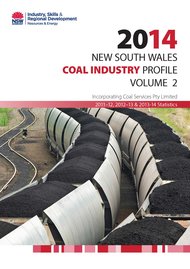 26th August 2015: NSW Government Department of Industry, Resources & Energy
26th August 2015: NSW Government Department of Industry, Resources & Energy
Coal Industry Profile Vol 2The 2014 NSW Coal Industry Profile, Volume 2 is a companion to Volume 1 and provides further reference material up to the 2013–14 financial years on the NSW coal industry.
Volume 2 includes dossiers listings with extensive details on all existing and proposed mines, coal terminals, steelworks and coal-fired power stations in NSW.
Index listings of mines, company equity and equipment are also included.
This important reference guide will be available for purchase via the NSW Government Online shop and display as a convenient online e-book.
A subscription to 2014 NSW Coal Industry Profile, Volume 2 can be purchased for $150 via Shop NSW subscription form.
(Please note there will be no hard copy printed, as available in the past.)
More HERE
MOU on the regulation of gas activities in NSW released today
Media release: 26 August 2015
The NSW Government has released a Memorandum of Understanding (MOU) today that provides clarity about the roles and responsibilities of Government agencies in regulating the gas industry.
The NSW Environment Protection Authority Chair and CEO Barry Buffier said the MOU on the regulation of gas activities in NSW clearly defines arrangements for the EPA as the new lead agency for compliance and enforcement for conditions of approvals.
“On 1 July the EPA took over full responsibility for monitoring and enforcing compliance with conditions of approval for all gas activities in NSW, including those conditions issued by other agencies (excluding work health and safety matters).
“Legislation to formalise the EPA’s new role is expected to be in place at the end of this year.
“In the interim the MOU sets out how the key government agencies will work together so that the EPA can perform its new role effectively and in a seamless way,” Mr Buffier said.
“The NSW Government is committed to effective, transparent and efficient regulation of gas activities and this MOU will help to achieve that.
“The MOU provides greater clarity for the community and industry about the roles and responsibilities of government agencies in regulating gas activities in NSW.
“The NSW Government has provided the necessary authorisations for the EPA to enforce conditions of operations until the legislation formalising the EPA’s new role is in place.
“The EPA will provide strong independent oversight of gas activities and ensure a consistent approach to compliance and enforcement.”
The MOU will be reviewed at the end of the year once the new legislation comes into effect.
The EPA’s new lead compliance and enforcement role is a key deliverable of the NSW Gas Plan.
The EPA has a 24 hour hotline to report potential breaches and pollution incidents. People can call 131 555.
The MOU is available on the EPA website here
See Memorandum of Understanding on the regulation of gas activities in NSW (PDF 5.1MB)
Applications Open for Environmental Restoration and Rehabilitation Grants
Wednesday, 26 August 2015 - Environment Minister Mark Speakman has invited community organisations and councils to apply for a share of the NSW Government’s $5.3 million Restoration and Rehabilitation Grants Program. Mr Speakman said the Environmental Trust Grants Program aimed to help community organisations, local councils and other groups run projects that would prevent or reduce environmental degradation at a local level.
“These grants will help communities and organisations conduct important environmental work in relation to vulnerable ecosystems,” Mr Speakman said.
“The government has set aside $5.3 million for this year’s grants program for projects working to conserve and restore our natural environment.
“There is $2 million available to community and not-for-profit organisations, $2 million for government entities and a further $1.3 million is available for owners and managers of NSW State Heritage Register listed properties.”
Applications for grants of $5,000 to $100,000 close on Friday, 18 September 2015. Grants are available for projects where work is carried out over a period of up to three years. To apply or for more details visit: www.environment.nsw.gov.au/grants/restoration.htm
The Future of Forests
Center for Global Development: Published on 24 Aug 2015
If deforestation continues on its current course, we'll have lost an area of tropical forest the size of India by 2050. This video explains why forest preservation is one of our best defenses against climate change.
Learn more at www.cgdev.org//forests
Music by Kevin MacLeod (incompetech.com)Licensed under Creative Commons: By Attribution 3.0
Have your say on modifications to Hera Gold Project
Media Release: Department of Planning and Environment
19 Aug 2015
A proposal to make modifications to the Hera Gold Project will be on exhibition from today for community feedback.
The Department of Planning and Environment is keen to hear the community’s views on the application which seeks to:
increase annual ore extraction from 355,000 to 505,000 tonnes
increase the total amount or ore processed over the life of the mine from 1.9 to 3.2 million tonnes
extend the completion date of mining operations for two years, until 2022
construct an area for waste rock
construct a car park
extend existing hardstand (a paved area for parking heavy vehicles) and stockpile areas
A spokesperson for the Department of Planning and Environment said the local community always has an opportunity to share their views.
“Community consultation is an integral part of the planning process and the applicant will have to respond to the feedback we receive and this is taken into consideration when we develop our recommendations,” the spokesperson said.
“It’s easy to participate by going online and we encourage everyone to take a look and have their say.”
To make a submission or view the environmental impact statement, visit www.majorprojects.planning.nsw.gov.au. Submissions can be made from Wednesday 19 August 2015 until Wednesday 9 September 2015.
Written submissions can also be made to:
Department of Planning & Environment, Attn: Planning Services,GPO Box 39, Sydney NSW 2001
The EIS is also available to view in person at:
Department of Planning and Environment, 23-33 Bridge Street, Sydney
Cobar Shire Council, 36 Linsley Street, Cobar
Bogan Shire Council, 81 Cobar Street, Nyngan
Hera Mine Camp, Camp Reception, Berthong Road, Nymagee
Nature Conservation Council, Level 2, 5 Wilson Street, Newtown
_____________________________
DIRECT LINK; www.majorprojects.planning.nsw.gov.au/index.job_id=7215
Katandra Sanctuary Open Days 2015
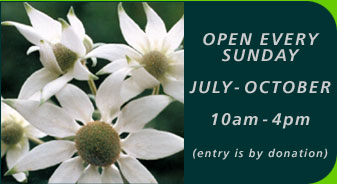
Katandra opens to the public every Sunday in July, August, September and October, from 10am to 4pm. The first will be Sunday July 5th with entry by donation.
See: Katandra Sanctuary Open Days 2015 by Marita Macrae
Proposed threatened species listings: Have your say on proposed threatened species listings
What's this about?
The Fisheries Scientific Committee (FSC), established under Part 7A of the Fisheries Management Act 1994, proposes to list the following animals found in NSW as threatened species:
• Stocky Galaxias (Galaxias tantangara) – Critically Endangered Species
• Hanley’s River Snail (Notopala hanleyi) – Critically Endangered Species
• Darling River Snail (Notopala sublineata) – omit as an Endangered species and insert as a Critically Endangered Species
The FSC reviewed information and found that the three species are facing an extremely high risk of extinction in NSW in the immediate future, as determined in accordance with criteria prescribed by the Fisheries Management (General) Regulation 2010.
The proposed determinations can be viewed at DPI Fisheries Head Office, District Fisheries Offices and on the Fisheries Scientific Committee website.
Have your say
The public are invited to view the proposals and submit written feedback via email fsc@dpi.nsw.gov.au or by post:
Fisheries Scientific Committee - c/- NSW DPI, PO Box 1305, Crows Nest NSW 1585
Formal Submission: Date: Aug. 5 - Sep. 16, 2015, Time: 9:00am — 5:00pm
Australians are not equally protected from industrial air pollution
B Dobbie and D Green 2015 Environ. Res. Lett. 10 055001. doi:10.1088/1748-9326/10/5/055001
Abstract
Australian air pollution standards are set at national and state levels for a number of chemicals harmful to human health. However, these standards do not need to be met when ad hoc pollution licences are issued by state environment agencies. This situation results in a highly unequal distribution of air pollution between towns and cities, and across the country.
This paper examines these pollution regulations through two case studies, specifically considering the ability of the regulatory regime to protect human health from lead and sulphur dioxide pollution in the communities located around smelters. It also considers how the proposed National Clean Air Agreement, once enacted, might serve to reduce this pollution equity problem. Through the case studies we show that there are at least three discrete concerns relating to the current licencing system.
They are:
non-onerous emission thresholds for polluting industry;
temporal averaging thresholds masking emission spikes;
and ineffective penalties for breaching licence agreements.
In conclusion, we propose a set of new, legally-binding national minimum standards for industrial air pollutants must be developed and enforced, which can only be modified by more (not less) stringent state licence arrangements.
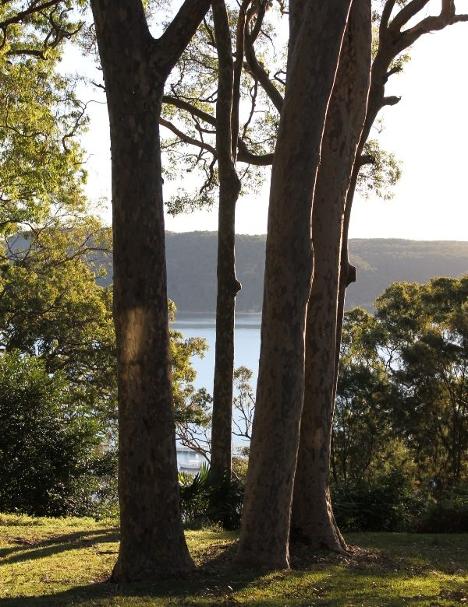
Check if you're in a 10/50 area: Review Now Complete
10/50 Review report recommendations announced
A review of the 10/50 scheme has been conducted by the NSW Rural Fire Service, Department of Planning and Environment, and the Office of Environment and Heritage. The review has now been completed and a copy of the final report is available here.
Thirty recommendations have been made. The NSW Government is now in the process of implementing these recommendations.
You can check here if you are in a 10/50 vegetation clearing entitlement area. Checking your land is easy.
For more information on the 10/50 vegetation clearing entitlement have a read of our frequently asked questions.
Changes to eligibility area
In response to the review recommendations, the NSW RFS has made interim changes to the 10/50 vegetation clearing entitlement area which come into effect immediately. Further changes will come into effect once legislation is finalised.
You should always re-confirm your eligibility to remove vegetation using the online tool before taking any action. For more information see our frequently asked questions.
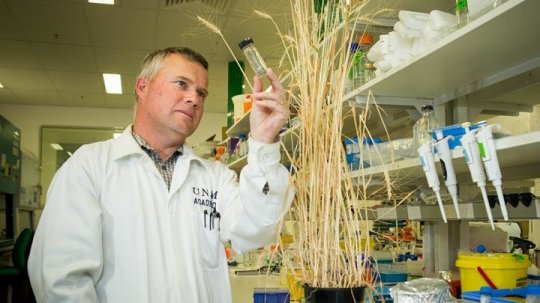
New fungi behind emerging wheat disease
August 26, 2015 - Researchers have unraveled the mystery cause of the emerging wheat disease white grain disorder.
Scientists at the Wheat Biosecurity Laboratory at The Australian National University (ANU) identified the cause of the disease when they isolated three previously undiscovered fungi from infected wheat samples and sequenced their genomes.
"Until now, growers and pathologists have recognised the symptoms of white grain disorder, but they haven't known what causes it," said lead researcher Associate Professor Peter Solomon from the ANU Research School of Biology.
"This finding now provides all stakeholders with confidence in what they are dealing with in the field."
Australian wheat exports are worth more than $6 billion a year with diseases costing the industry around $1 billion a year. white grain disorder emerged about 20 years ago and has sporadically affected crops in Southern Queensland and South Australia, but until now has been poorly understood.
"This is an important advance to the field, as it can be difficult to manage diseases when you don't know what causes them. This study is crucial to our ability to manage this disease in the future," Associate Professor Solomon said.
"Growers who have invested heavily in their crops for the growing season can now have confidence of knowing what the pathogens are behind the disease and what they can do about it."
The team found the disease is caused by three previously unidentified fungi, which occur in different proportions in different diseased areas, although they produce identical symptoms.
Elisha Thynne, Megan C. McDonald, Margaret Evans, Hugh Wallwork, Stephen Neate, Peter S. Solomon. Re-classification of the causal agent of white grain disorder on wheat as three separate species of Eutiarosporella. Australasian Plant Pathology, 2015; DOI:10.1007/s13313-015-0367-2
Top: This is Associate Professor Solomon in the wheat biosecurity lab at the Research School of Biology. Credit: Stuart Hay, ANU
Jane Bowen - what if we could create diets tailored to your genetic profile?
CSIRO: Published on 25 Aug 2015
Jane is exploring the potential to one day assess people’s DNA to tailor nutritional requirements and dietary programmes specifically to them. Her unique holistic approach to how we eat allowed her to design solutions that succeeded where many diets have failed. From approaching the language around dieting, to drawing on her own parenting experiences, Jane and her team have shown that getting different results requires different thinking.
For more info on Jane and the rest of the #CSIROseven visithttp://ow.ly/RaK2H
CSIRO AND NICTA JOIN FORCES TO CREATE DIGITAL RESEARCH POWERHOUSE
28 AUGUST 2015: Joint media release; The Hon Ian Macfarlane MP, Minister for Industry and Science, The Hon Malcolm Turnbull MP, Minister for Communications
One of the largest digital innovation teams in the world will be created when CSIRO's Digital Productivity flagship and NICTA merge, Minister for Industry and Science Ian Macfarlane and Minister for Communications Malcolm Turnbull announced today.
Researchers from the two organisations will come together to form a new CSIRO entity called Data61, led by the successful and influential Australian technology entrepreneur Mr Adrian Turner.
"CSIRO and NICTA are two world-class research organisations with some of the world's leading scientists," Minister Macfarlane said.
"Both have an impressive track record in digital innovation and have demonstrated their ability to take home-grown technologies to market.
"Together they will be a force to be reckoned with, creating an internationally-recognised digital research powerhouse that will benefit Australian industry as it reaches into new global markets and seizes new opportunities for jobs and growth.
"I'd like to thank the NICTA members and the Board for embracing this opportunity to supercharge Australia's digital research."
"Having a single national organisation will enable Data61 to produce focussed research that will deliver strong economic returns and ensure that Australia remains at the forefront of digital innovation," Minister Turnbull said.
"The new combined entity will continue to train Australia's future digital technology leaders through the enhanced PhD programme, with more than 300 technology PhDs enrolled at partner universities."
Mr Turner said he was joining CSIRO at an exciting time. His vision for Data61 is to harness the start-up culture of NICTA and multidisciplinary strength of CSIRO to deliver maximum benefit to Australia.
"So much of our understanding and interaction with the world is underpinned by digital technology and data.
"It is a fast moving and big growth area for Australia and Australian industry, and Data61 will be well-positioned to play a leading role in defining the new economic structures and opportunities that are emerging globally."
For the past 18 years, Adrian Turner has been based in Silicon Valley, firstly working for global tech giant Phillips then building his own companies from the ground-up.
Mr Turner was formerly Managing Director and Co-Founder of the Borondi Group, a company that applies emerging technologies in traditionally conservative industries such as agriculture, mining and transportation.
Prior to that, he co-founded smart phone and Internet of Things security company Mocana Corporation, where he raised more than $40 million dollars from institutional and corporate investors.
He also authored the book BlueSky Mining - Building Australia's Next Billion Dollar Industries and was Chair of the Board of Directors for Advance, Australia's expatriate network.
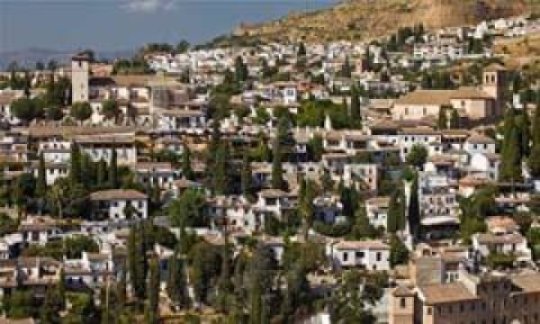
Hypoallergenic parks: Coming soon?
August 26, 2015 - Ah-choo! If you suffer from seasonal allergies, you're probably sick of this refrain. And you're not alone. Millions of Americans suffer from seasonal allergies. Moreover, there are allergy sufferers around the world echoing this allergy anthem.
Among the ranks is Paloma Carinanos, a professor of Botany at the University of Granada, in Spain. Rather than sitting back with a box of tissue, Dr. Carinanos has taken a more proactive approach to fighting her seasonal allergies. She studies how the trees in urban green spaces contribute to and even cause allergies.
Carinanos' interest in studying allergies started early. She and her seven brothers and sisters all suffer from seasonal allergies, a trait they inherited from their father. "Since I was young, I became an expert in everything associated with this disease, its symptoms, how to prevent it, avoid it, or treat it." Carinanos said. Despite this early interest in plants and allergies, she originally planned to attend veterinary school. But she says, "I think that my destiny was written, and I was admitted to the Faculty of Biology of the University of Cordoba."
Now she is an expert in the conservation and management of plants and wildlife. With her team, she studies how the plants in urban green spaces affect the air quality of that area. Then they look at how the air quality affects human health. Her team specifically studies the city of Granada, Spain. This city's climate and layout is like that of many cities in the Mediterranean area, which has the highest occurrence of pollen allergies in the world. The researchers hope their efforts will lead to fantastic urban green spaces that don't cause allergic reactions for 30% of the city's population.
To start, Carinanos and her team began by classifying the trees in Granada's ten largest green spaces. They grouped the trees into three categories. Then they recorded the type of pollination, the length of the pollination period, and the potential for causing allergies for each tree. The researchers used all of this information to calculate if the green space was negatively affecting air quality and causing allergies.
What the researchers found was surprising. Many of the most common trees in Granada were among the trees causing unhealthy or hazardous air quality. Carinanos also found it surprising that the design of these green spaces thought about landscaping, climate, and fashion criteria, but didn't think about pollen problems.
From their findings, the researchers have made suggestions for planning future green spaces. Their recommendations are to make sure that all citizens can enjoy the great outdoors with clear eyes and dry noses. Carinanos says that in the future, urban green spaces "will become 'comfort islands' inside 'urban heat islands.'" She wants to make sure these comfort islands are "for all citizens without exception."
This research may be just what allergy sufferers have been waiting for, and it's good news for others, too. Carefully selecting trees for green spaces may help combat climate change. Increasing the variety of trees in green spaces can both decrease allergies and increase the urban vegetation's ability to clean pollutants out of the air.
Carinanos and her team stress that their research is a tool for planning and prevention. They hope that other cities will be able to use their methods to prevent high allergen levels. Doing so may help growing city populations live more comfortably and with fewer health issues. The researchers ultimately want to ensure that urban green spaces play a role in keeping both the climate and people healthy.
Paloma Cariñanos, Cristiano Adinolfi, Consuelo Díaz de la Guardia, Concepción De Linares, Manuel Casares-Porcel. Characterization of Allergen Emission Sources in Urban Areas. Journal of Environment Quality, 2015; 0 (0): 0 DOI: 10.2134/jeq2015.02.0075
Top: These are cypresses in the historical neighborhood Albayzin, in Granada. You can see how symbolic (and common) these trees are to the region. Credit: Paloma Cariñanos Gonzalez
Wide-ranging networking boosts employee creativity
August 26, 2015 - Companies can promote creativity in employees by encouraging them to network beyond their immediate business networks, according to a new study by management experts at Rice University, Australian National University (ANU), Erasmus University Rotterdam, Monash University in Clayton, Australia, and the University of Los Andes in Bogota, Colombia.
"Social networks can be important sources of information and insight that may spark employee creativity," the authors said. "The cross-fertilization of ideas depends not just on access to information and insights through one's direct network -- the people one actually interacts with -- but at least as much on access to the indirect network one's direct ties connect to."
The researchers found it is the "nonredundant ties" -- the people one does not interact with directly but with whom one's direct ties interact -- that offer the greatest efficiency for employees to gather novel information. This information can then be used as the raw material for the employee to generate creative ideas, said the authors, who believe the results are applicable to U.S. companies.
"More specifically, when networking, building two-step nonredundant ties -- which means one's two direct network ties are not connected by the same third person -- is the most efficient way for obtaining nonredundant information and generating creative ideas," said Jing Zhou, the Houston Endowment Professor of Management at Rice's Jones Graduate School of Business. "Thus, employees need to proactively build network ties with such people."
Zhou co-authored the paper with Giles Hirst, the Inaugural Chair of Leadership at ANU's College of Business and Economics; Daan van Knippenberg, a professor of organizational behavior at Erasmus University's Rotterdam School of Management; Eric Quintane, an assistant professor at the University of Los Andes' School of Management; and Cherrie Zhu, a professor of human resource management and Chinese studies in Monash University's Department of Management.
The research, which will be published in the Journal of Applied Psychology, was based on a multilevel analysis of multisource survey data from 223 sales representatives nested within 11 divisions of a Chinese pharmaceutical company.
The authors were engaged by a large state-owned pharmaceutical corporation in the People's Republic of China to study 11 divisions with an average of 25 sales representatives (ranging from 14-68 people) with an average of three managers (ranging from two to six managers). To help the firm drive expansion, the researchers identified sales representatives who had developed extensive networks and so were likely to build networks in geographic regions beyond the organization's territory. These reps would then play key roles building sales networks in these regions.
The authors then examined the creativity of sales representatives. Sales representatives displayed creativity by developing new ways to promote company products, devising strategies to cross-sell products, identifying ways to connect with hard-to-access sales targets (for example, by seeking introductions through a trusted intermediary) and developing ideas or strategies to enhance client sales (for example, enhancing product visibility in retail outlets and personalizing product launches to push customers to particular distributors). Such examples of creativity are increasingly recognized as essential to gaining competitive advantage and thus core to pharmaceutical marketing and sales the authors said. They then matched measures of sales representatives' direct and indirect ties in their social networks to managers' creativity ratings.
The authors said the results have timely implications for management practice.
"Organizations may benefit from developmental efforts helping employees build the efficiency of their direct networks, meaning the proportion of direct ties in an individual's network that are not interconnected, and guiding employees to establish nonredundant ties, because such networks are likely to result in indirect networks of high-reach efficiency that are conducive to creativity," they said.
Giles Hirst, Daan Van Knippenberg, Jing Zhou, Eric Quintane, Cherrie Zhu. Heard it through the grapevine: Indirect networks and employee creativity.. Journal of Applied Psychology, 2015; 100 (2): 567 DOI: 10.1037/a0038333
UNSW researchers outsmarting cancer with revolutionary new treatment
26 AUG 2015: DAN WHEELAHAN
Patients with hard-to-treat tumours could know within six months whether a cancer drug developed by UNSW researchers is more effective than traditional chemotherapy and will allow them to live a relatively normal life during treatment.
The drug is part of a study, led by UNSW Professor Philip Hogg, which is investigating new ways of treating solid cancer tumours, including brain and pancreas tumours.
Data from the Australian Institute of Health and Welfare (AIHW) reveals that the five-year survival rate for these cancers has improved by less than three per cent over the past two decades.
The cancer drug is based on a molecule that shuts off a cancer cell’s energy production, which stops the cells dividing and kills them. The molecule has been found safe when used in animals and is now being tested on 22 cancer patients at Royal Melbourne Hospital, Peter McCallum Hospital and the Chris O’Brien Lifehouse in Sydney.
Professor Hogg said that the new treatments selectively target cancerous cells because of the unique way they metabolise glucose to feed themselves and grow, leaving healthy cells unharmed.
“We know that cancerous cells hijack normal systems of cell metabolism to increase their energy. In this process they produce a by-product that essentially poisons the surrounding tissue, allowing them to become immortal and spread,” Professor Hogg said.
Associate Professor Karen Canfell, Director of Cancer Research at Cancer Council NSW, said the findings from Professor Hogg and his team are paving the way for the development of an important class of new drugs that will target the way poor-prognosis cancers are treated.
“This outstanding research is a clear example of the benefits of continued funding into cancer prevention, management and treatment - this is crucial to developing new therapies and procedures that will extend the lives of cancer patients,” Associate Professor Karen Canfell said.
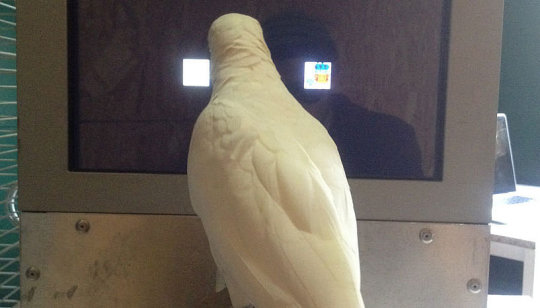
Even cockatoos draw conclusions
August 26, 2015 - It can be challenging to develop a task setup to test inference by exclusion that can be applied in similar way to different species. One of the problems of previous studies was to exclude the possibility that animals chose a novel stimuli simply out of curiosity rather than by the exclusion of known negative stimuli. The use of the touchscreen presents a controlled setting to test cognitive capacities in animals and has already successfully been used in a number of species.
Goffin cockatoos are a highly curious Indonesian parrot species that have already proven to possess remarkable cognitive capacities. They possess high levels of 'Neophilia', which is the tendency of an individual to explore novel items and is believed to have evolved in species inhabiting islands, as there they might face fewer or no predators. In the current task, the Goffins had to learn to associate a picture with a reward that would be delivered automatically after they touched the picture on the touchscreen whereas the picture next to it would lead to no reward. During this training the unrewarded stimulus occasionally was replaced by novel, unknown stimuli. Only once the individuals chose reliably the positive stimulus over the negative or novel ones they were tested for their inference skills. This procedure ensured that the cockatoos would not choose novel pictures purely based on curiosity in the test.
In the following tests however, various combinations of novel and known pictures, which could be rewarded or unrewarded, were presented to the birds. Depending on how the individuals performed in this sequence of tests, allowed the researchers to tell apart other, strategies that may have used by the animals. "More than half of our cockatoos choose their pictures in a way that clearly indicates the ability of infer by exclusion about rewarded stimuli. However alternative strategies also play an important role in guided their choices," says Mark O'Hara who developed this task together with his colleagues.
"Considering the cockatoos capacities in previous tasks we actually expected that they would show inferences by exclusion, but this was the first test if we could detect this ability with our new task. That we could show this sort of reasoning, together with other strategies so nicely, lets us hope that the method will be applicable to many species and ultimately might help us to understand something about the evolution of this ability" he adds.
Mark O’Hara, Alice M. I. Auersperg, Thomas Bugnyar, Ludwig Huber.Inference by Exclusion in Goffin Cockatoos (Cacatua goffini).PLOS ONE, 2015; 10 (8): e0134894 DOI:10.1371/journal.pone.0134894
Top: A cockatoo making a choice between a new and a familiar image on a touch screen. Credit: Copyright Mark O'Hara

Scotland's People: Deaths of Seamen and other Marine Returns of Deaths go online
August 28, 2015 - A complete record of the deaths of Scottish seafarers from late Victorian times until 1974 is being made available online for the first time through ScotlandsPeople.
Among the 14,000 new records available through ScotlandsPeople are monthly returns of the Deaths of Seamen, which list Scots along with other crew members of all nationalities who were serving on British-registered vessels between 1897-1974.
The records were compiled by the Registrar General of Shipping and Seamen. Only the Scots can be searched for by name.
Other Marine Returns released online are the Returns of Deaths at Sea, 1902-1905. All the Marine Returns can be searched within the statutory registers by using the "Marine Returns" option under Minor Records.
Read more about the Minor Records available.
Cabinet Secretary for Culture and External Affairs, Fiona Hyslop, said:
"Scotland is a maritime nation with fascinating stories and an important seafaring history and these new online registers will provide wider access to this heritage. I welcome the addition of this new resource that NRS is making available, which is part of the story of Scotland and will encourage people from across the world and at home to find out more about Scotland's seafaring heritage".
Tim Ellis, Registrar General and Keeper of the Records of Scotland, said:
“The Returns of Deaths of Seamen and Deaths at Sea open a window into the lives of Scots seafarers in the first half of the twentieth century. They reveal the dangers experienced by seamen and passengers alike, and provide useful information for anyone wishing to discover more about their ancestors. Our commitment at National Records of Scotland is to continue to extend digital access to the key records that researchers want.”
Find out more about William M Murdoch, First Office on the fateful HMS Titanic, and the crew on The Lusitania. Also discover other fascinating entries uncovered in the Returns of Deaths at Sea.
Top: sinking Lusitania
CALL TO RESEARCHERS WORLDWIDE TO SAVE HONEY BEES
25 AUGUST 2015 - Honey bees are essential for the pollination of about one third of the food we eat - including fruit, vegetables, oils, seeds and nuts - yet their health and ability to pollinate our crops is under serious threat.
To help tackle this worldwide problem, CSIRO is leading the Global Initiative for Honey bee Health - an international collaboration of researchers, beekeepers, farmers, industry, and technology companies aimed at better understanding what is harming bees and finding solutions to help secure crop pollination.
Integral to the research effort are micro-sensors that are manually fitted to bees (pictured) which work like a vehicle e-tag system, with strategically placed receivers identifying individual bees and recording their movements in and around bee hives.
"The tiny technology allows researchers to analyse the effects of stress factors including disease, pesticides, air pollution, water contamination, diet and extreme weather on the movements of bees and their ability to pollinate," Professor Paulo de Souza, CSIRO Science Leader, said.
"We're also investigating what key factors, or combination of factors, lead to bee deaths on mass."
"The sensors, working in partnership with Intel technology, operate in a similar way to an aeroplane's black box flight recorder in that they provide us with vital information about what stress factors impact bee health."
As bees are normally predictable creatures, changes in their behaviour indicate stress factors or a change in their environment.
By modelling bee movement researchers can help identify the causes of stress in order to protect the important pollinating work honey bees do and identify any disease or other biosecurity risks.
CSIRO Pollination Researcher, Dr Saul Cunningham, said Australia has been very lucky, so far, to be the only country that doesn't have the devastating Varroa mite, which has wiped out bee colonies overseas at an alarming rate.
"This puts Australia in a good position to act as a control group for research on this major issue that could one day become our problem too," Dr Cunningham said.
However, Australia's horticulture and agricultural industries are particularly vulnerable to declines in honey bee populations as they rely on un-managed feral honey bees for much of their crop pollination.
"Our managed bee pollination services would be hard-pressed to meet the extra demand required to replace the key role un-managed honey bees play so, the outcome would likely be a drop in crop production and a rise in prices of popular food staples like fruit and veggies," Dr Cunningham said.
The international initiative is being mounted to assist in uniting the efforts of those working in the critical area of protecting bee health.
"The time is now for a tightly-focused, well-coordinated national and international effort, using the same shared technology and research protocols, to help solve the problems facing honey bees worldwide before it is too late," Professor de Souza said.
The GIHH proudly partners with the following industry members - Intel, Hitachi Chemical, Nissin Corporation and Vale, and brings together scientists from Australia, New Zealand, Brazil, Mexico and the United Kingdom.
Global Initiative for Honey bee Health
The Global Initiative for Honey bee Health (GIHH), led by CSIRO, aims to protect and improve the health of honey bees, ensure sustainable production of crops dependent on honey bee pollination, and increase productivity through coordinated management of pollination.
Investing $650 million for Australian Disability Enterprise jobs
25 August 2015: Joint Media Release with: Lucy Wicks MP, Federal Member for Robertson
The Australian Government is delivering employment certainty for up to 20,000 people with disability by committing more than $650 million to Australian Disability Enterprise (ADE) jobs over the next three years.
The Assistant Minister for Social Services, Mitch Fifield, and the Member for Robertson, Lucy Wicks, today visited Fairhaven Disability Services to announce the funding.
This is essential support for ADE jobs as workers with disability transition to the National Disability Insurance Scheme (NDIS).
ADEs are incredibly important in the continuum of employment options for people with disability, provide jobs in businesses such as laundries, cafes and gardening crews.
Without ADEs, many people with disability would lose the opportunity to work, socialise and learn new skills.
This funding is about ensuring that supported employees and ADEs have certainty now and over the next three years.
The new contracts will reduce red tape and help specialist businesses that employ people with disability to make the transition from current arrangements to the new claiming processes on the NDIS provider portal.
The NDIS is already operating in seven trial sites across the country, making a difference in the lives of more than 17,300 Australians with disability, their families and their carers.
The Australian Government is also investing in additional measures such as free online corporate governance training to assist ADEs to prepare for the National Disability Insurance Scheme.
We want ADEs to be in the best possible shape so they can thrive in the new environment of the National Disability Insurance Scheme and offer great choice to people with disability.
ADEs can register for the free training at www.planforndis.org
Further information regarding the new funding is available on theDepartment of Social Services’ website.
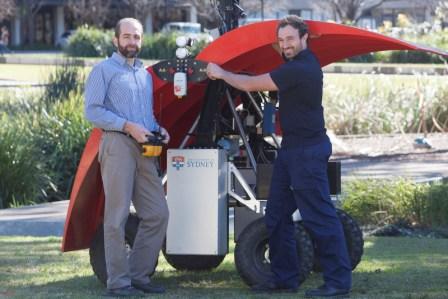
Philanthropy backs bots
27 August 2015 - Anonymous $1.5 million donation to robotics research aims to make technology accessible to the average Australian farmer.
Project co-ordinator Salah Sukkarieh Professor of Robotics and Intelligent Systems, and Director of Research and Innovation at the Australian Centre for Field Robotics says the affordable Farmbots will give farmers a tool to help better manage their farms.
“It will also help them reduce the time spent on laborious farm duties, crop and animal monitoring, as well as invasive pest management,” he said.
“The technology will provide our farming community with low-cost platforms that can be adapted easily to meet the farmer’s individual needs.
“The new technology will assist agriculturalists in taking their farms into the future as well as provide an education tool for the next generation of growers.
“We will develop two low-cost Farmbot devices – the EmuBot™ and the KangaBot™. The platforms will be rugged, robust, battery and solar powered, energy efficient, simple to operate, and easily adaptable to meet different faming needs,” Professor Sukkarieh said.
The two variants will capture a wide range of agriculture applications from livestock, to tree crops and vegetable rows.
“We want to give all farmers the opportunity to have access to transformational technology by creating an affordable robot,” says senior technical developer Mark Calleija.
“Access to low cost robots would positively impact the quality of life for our farmers and their communities.
“It would help them address input and labour costs and improve efficiencies.
“It will also provide a generic platform that will enable farmers to grow technological capability on their farms as well as provide an educational tool for next generation growers.
“The mainstream use of agricultural robotics will also encourage a renewed interest in farming and attract a new technology-savvy generation back to the farm,” said Calleija.
With Australia’s population expected to reach around 38 million by 2060 the Australian Productivity Commission’s July 2015 update report said future growth in Australia’s agricultural sector “is likely to depend on the more productive use of land, water and other natural endowments through the application of the most up-to-date equipment and technologies against the background of changing productive potential.”
Professor Archie Johnston, dean Faculty of Engineering and Information Technologies, said this type of generous donation would accelerate researchers’ efforts in working collaboratively with industry groups to deliver innovative technologies that will inevitably revolutionise farming techniques.
With every gift to the University of Sydney, donors become part of INSPIRED – the Campaign to support the University of Sydney, which aims to raise $600 million by 2017.
Top: Professor Salah Sukkarieh and Mark Calleija work on the Ladybird
Sydney says bye bye biosecurity beagles
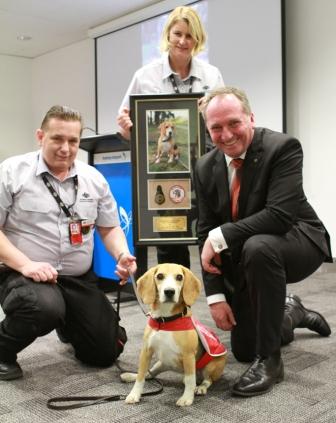
The last biosecurity beagles at Sydney International Airport have said their farewells after years of service safeguarding Australia from exotic pests and diseases that could affect our way of life.
Minister for Agriculture, Barnaby Joyce, said beagles had served Australia well for more than 20 years as one of the surveillance technologies used to protect our agricultural industries, economy and environment.
"Our detector dog programme started in 1992, and since then beagles have been at our international airports sniffing out prohibited items such as seeds, plants, vegetables, fruit, eggs and meat with their keen sense of smell," Minister Joyce said.
"Now incoming passengers will be greeted by a labrador instead of a beagle.
"Travellers are sometimes unaware that plant and animal products, if not declared to biosecurity officers, could have a huge impact on our nation.
"We need travellers to think about what they're bringing into Australia, recognise the impact it could have and truthfully fill out the Incoming Passenger Card—which is a legal document.
"The five beagles we're honouring—TJ, Wally, Sharne, Axel and Andy—have all served Australia well.
"Collectively they've seized 29,799 items, weighing in at nearly 7 tonnes combined, from more than 100 countries.
"As a result of their sharp noses the five beagles have been responsible for 91 Quarantine Infringement Notices issued to travellers arriving in Australia."
Minister Joyce emphasised the important role travellers played in keeping Australia free from harmful pests and diseases.
"Managing Australia's biosecurity system to protect our plant, animal and human health is a big and important job," Minister Joyce said.
"Each year more than 17 million international passengers arrive in our airports, and our dedicated biosecurity staff screened 8.7 million of those in 2013–14—that's 24,000 a day.
"Our biosecurity beagles have potentially saved Australia from exotic diseases such as foot-and-mouth disease and equine influenza as well as countless others.
"These farewells are significant, as TJ, Wally, Sharne, Axel and Andy are the last working beagles at Sydney International Airport.
"As our last beagles retire, we're in the process of moving our canine workforce toward labradors, who are a more readily available and versatile breed, and are more suited to work across a range of locations.
"Andy, Wally and Axel will be using their expertise to help train new detector dog handlers up in Brisbane, while TJ and Sharne will enjoy some well deserved rest and relaxation in retirement with former handlers."
Top: Photo of Minister Joyce with Department of Agriculture dog handlers David Lister and Clare OShannessy and beagle TJ
Preserving Australia's Maritime Heritage
24 August 2015 - The Australian Government today announces grants of more than $135,000 to support projects that preserve and promote Australia’s maritime heritage.
The successful recipients of the Maritime Museum of Australia Project Support Scheme grants program will help collect, conserve and display objects from an important part of Australia’s history.
The scheme provides grants of up to $10,000, as well as internships and in-kind support from Australian National Maritime Museum experts. This includes support for staff and volunteers from regional and remote organisations to teach them how to develop educational and public programs that help promote Australia’s maritime collections.
Maritime museums and historical societies play an important role in preserving and sharing Australia’s maritime heritage and these grants will ensure important maritime objects are available now and for future generations.
In 2015-16, funding has been awarded to 19 organisations. In-kind support has been offered to 12 organisations and internships have been offered to three applicants.
Funding will support interactive projects including the production of story boards by Albury City Council to be placed along a riverside walk, the creation of a shipwreck walk by the Busselton Historical Society and the manufacturing of 10 interpretive signs by Port Stephen’s Historical Society to display photographic and factual information located along public walkways.
The scheme which offers funding to non-profit museums, historical societies and organisations is supported by the Australian Government and administered by the Australian National Maritime Museum. The next round of funding will be open for applications in February 2016.
For more information about the Maritime Museum of Australia Project Support Scheme and a full list of grant recipients visit the Australian National Maritime Museum website
$11.9 million to preserve Indigenous languages
26 August 2015 - The Australian Government today announces $11.9 million for 2015-16 to support work to revive and maintain Australia’s Indigenous languages.
The Indigenous Languages and Arts program aims to showcase, protect and encourage participation in traditional and contemporary Indigenous artistic expression to strengthen pride in identity and culture through language.
Languages and the arts are essential to the wellbeing, culture and identity of Aboriginal and Torres Strait Islander peoples and this funding will play an important role in sustaining and strengthening Indigenous communities.
The funding, which comes from the languages stream of the Indigenous Languages and Arts program, will support community driven activities designed to address the erosion and loss of Indigenous languages across Australia.
This $11.9 million will help preserve Indigenous languages in communities right across Australia.
Funded activities include multimedia programs, cataloguing and digitising language material, the production of stories, a language conference, development of dictionaries and other language resources, online language lessons and news in languages.
The funding will also enable Indigenous language centres and service organisations to provide professional development opportunities for Indigenous language workers. For example, the How Do I Say Language Learning project will work with experts from the Indigenous Language Institute in Santa Fe, New Mexico to upgrade the training resource, Miromaa, designed by Indigenous staff from the Arwarbukarl Cultural Resource Association to revive Indigenous languages.
More information about the Indigenous Languages and Arts program and a full list of funding recipients can be found on the Ministry for the Arts website.
Pools with Plants Don't Need Chlorine or Salt - The Ancient Using of Plants to Create a True 'Natural Pool'
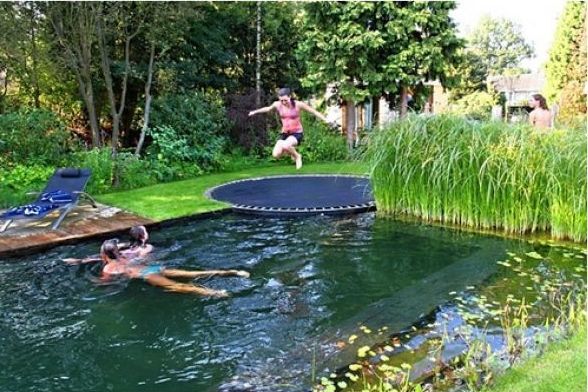
The plants create a natural filtration system for the water that, once established, eliminates the need for use of chlorine or salt.
A natural swimming pool or natural swimming pond (NSP) is a system consisting of a constructed body of water, where the water is contained by an isolating membrane or membranes, in which no chemicals or devices that disinfect or sterilize water are used, and all clarifying and purifying of the water is achieved through biological filters and plants rooted hydroponically in the system.
It is called a "natural swimming pool" because the filtration systems used have biological equivalents in the natural world. In fact if there is not an example of the type of filtration being used in the natural world then it is not seen by the IOB (International Organization for natural Bathing waters)to be naturally filtered.
The NSP is divided into two areas:
The swimming zone is the area intended for swimming that resembles a conventional swimming pool or pond.
The regeneration zone consists of a lined overflow pool filled with specific filtration substrate and flora. Plants used for water regeneration can be supplemented with decorative flowering species to create an attractive water garden environment. The biological processes that clean the water take place in this zone.
In an NSP, swimming pool water flows via gravity from the swimming pool into distribution shafts. The water then passes through a biological fine filter/bioreactor before it is pumped into the regeneration zone. Plants in the regeneration zone are planted in the substrate, and these plants compete for nutrients that would feed algae. The water is cleaned biologically by the metabolic processes found in the substrate in which the plants are rooted. Thus, microorganisms and the water plants ensure effective, continuous cleaning. No processes beyond these, such as UV sterilization, are found in true European style NSPs.
Because of their reliance on natural environmental factors, each NSP system is built with consideration to the region and climate where it is installed. Construction elements such as the biological filter and the combination of contaminant ridding plants vary with each pool.
A Natural Swimming Pool is a constructed wetlands ecosystem based on the principles of limnology, hydraulics, hydroponics, and modern pool construction methods. For the end product to have the ecological stability to be a long term success, all of these principles must be carefully incorporated. It is therefore far more complex to design and build a Natural Swimming Pool than it is to build a traditional, chemically-treated swimming pool.
Natural pool. (2015, August 20). In Wikipedia, The Free Encyclopedia. Retrieved from https://en.wikipedia.org/w/index.php?title=Natural_pool&oldid=677061275
UWS and Books in Homes - Empowering kids literally
27 August 2015 - Being read to as a child and having books in the home is something most of us take for granted, but for many children this is not an everyday occurrence it is a privilege.
Earlier this year the University of Western Sydney together with Books in Homes launched its 'Best Book Giving Assembly Competition', to the University's 23 sponsored primary schools.
The focus on both the competition and programme is that 'Reading is Fun' so; students, teachers, parents along with a UWS representative and role model were asked to be creative in how they present 'reading'. Focussing on either a book, write an original novel, or to express how a book can engage emotion.
Willmot Public School is the first to win the Perpetual Trophy for the 'Best Book Giving' competition with teachers bringing 166 students to laughter over their interpretation of Michelle Ray's, A Huntsman Spider in my House.
Alan Beckley, Acting Director for Widening Participation, says the University of Western Sydney together with Books in Homes is passionate about helping less fortunate children discover the joys of reading.
"Research has shown a child that is read to and has plenty of books within the home are two of the most important indicators towards future academic success.
"Outreach programmes that help shine a bright light onto pathways leading to future learning and personal achievement for our youth should always be supported," says Alan Beckley.
The programme also offers primary students the opportunity to meet with UWS students to see how tertiary studies can become a realistic goal.
Scholarship to help balance academia and parenthood Now Open at UNSW
19 AUG 2015: UNSW MEDICINE
Balancing parenthood with academia is set to become easier with a UNSW Medicine scholarship that helps early career women focus on research when returning to work after parental leave.
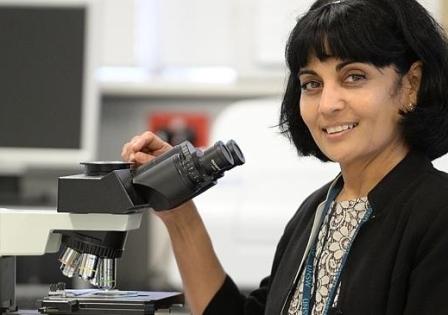
Scholarship named in her honour - Professor Minoti Apte OAM
The scholarship – named after NSW Premier’s Woman of the Year Professor Minoti Apte OAM – will provide eligible staff with relief from teaching and administration to write publications, applications and/or access research assistance. UNSW Medicine Dean Rodney Phillips said the scholarship – the first of its kind in the faculty – reinforces a long and proud tradition of employing and promoting female academics across all schools and affiliated research institutes.
“Some of the nation’s leading academics and researchers are also mothers and it is vital that we do everything we can to support women who are balancing parenthood with academia,” Professor Phillips said. Professor Phillips also highlighted the scholarship’s alignment to a University-wide commitment to a pilot of the Athena SWAN program; a highly successful UK-based charter established to encourage career advancement for women in higher education and research working in the fields of science, technology, engineering, maths and medicine (STEMM).
Professor Apte said she was thrilled the award was named in her honour and said supporting mothers to continue to flourish in their academic research career is vital. According to the latest Catalyst figures, women hold just 29.9% of ‘above senior lecturer’ positions in Australia.
“My path from medical student to senior academic while raising a family was challenging. I was lucky to have received a lot of support but inequality and disadvantage for women returning to work remains a big problem in Australia,” she said. “This scholarships shows that UNSW Medicine is leading the way in creating family-friendly workplace arrangements and supporting women who want to balance family with pursuing a career in science, academia or medical research.”
The idea for the scholarship came from Head of the School of Public Health and Community Medicine Professor Raina MacIntyre who has also experienced first-hand the challenge of juggling motherhood with a successful career in academia. “This scholarship is not only about providing mothers with time for research, it is also about sending female academics in the faculty the message that their research and career is important, and that retaining bright women in the workforce is a priority,” she said.
The first scholarship recipient is expected to be announced in November 2015. The maximum amount available per scholarship will be $20,000. Applications close 30 September 2015. For more detailed information go to: unsw.edu.au/academic-women-unsw-medicine